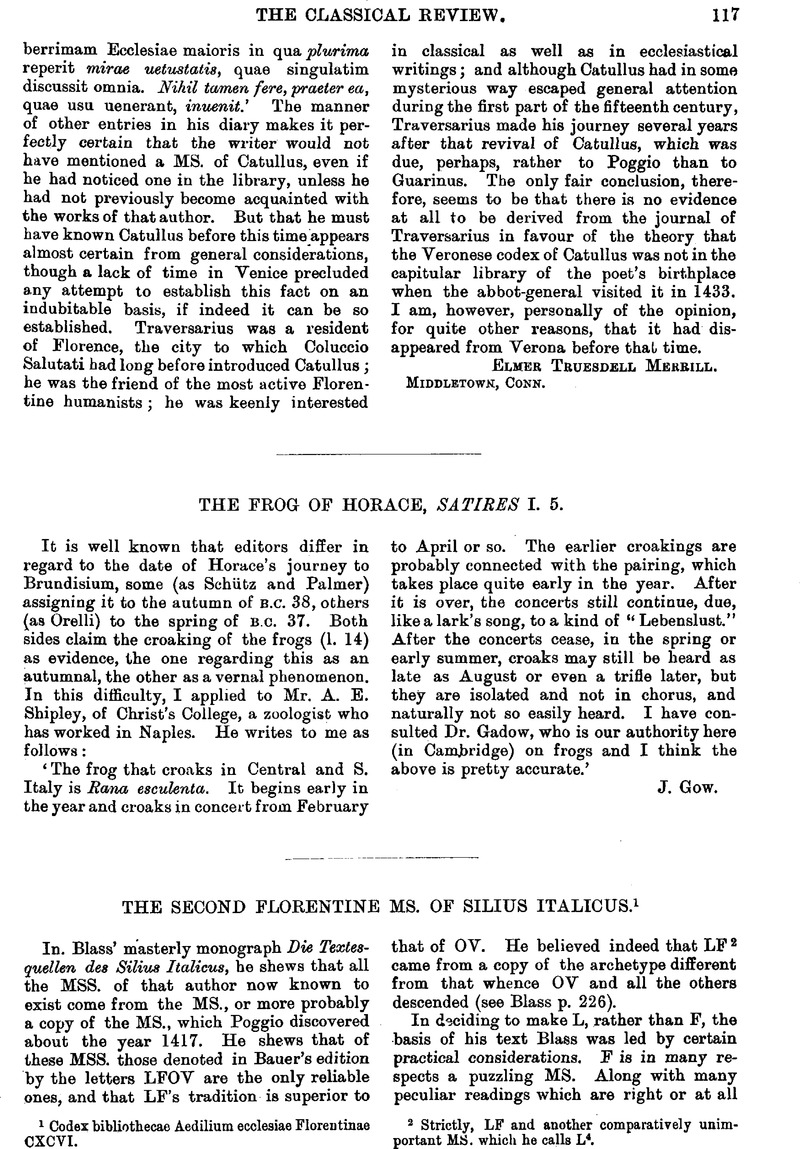No CrossRef data available.
Published online by Cambridge University Press: 27 October 2009

page 117 note 2 Strictly, LF and another comparatively unimportant MS. which he calls L4.
page 118 note 1 Thilo, in the paper referred to later on, rejects the exx. given by Blass (p. 233)—only four in all. Certainly, to charge F with interpolation in i. 166 (quem postquam—uidit Deformem leti famulus clam corripit ensem) is most unjust. For leti F has lateri. Leti was written laeti in its archetype (cp. iv. 633, where LFOV have iacto for leto), and F made laceri or lateri of it: cp. v. 138, illacerabile OV illetabile L, F at first as OV, then corrects to L; ix. 504, MSS. laetatur, laceratur; xi. 45, MSS. laeta, latea, lacera. F2's interpolations hardly affect F itself—if, as is implied by Blass (p. 231), they are distinguishable as later additions.
page 118 note 2 Is it certain that Blass was not rebutting the theory he referred to in Textesquellen, that F was S itself?
page 118 note 3 Cp. the inscription on F: haec legens apes imitare.
page 118 note 4 L3 = Bauer's L, Q = Blass' (and Bauer's) O. With G we are not here concerned.
page 118 note 5 But it hardly explains why he wrote mainly not in Gothic?
page 119 note 1 In i. l.c. LF2 have sonorum for FOV's senonum (Blass, p. 232).